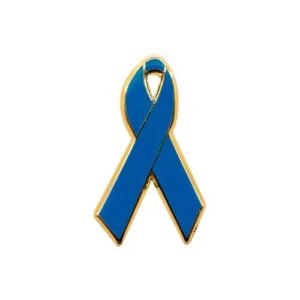Tourette Syndrome is part of a spectrum of hereditary, childhood-onset, neuro-developmental conditions referred to as Tic Disorders. These conditions affect both children and adults, causing them to make sudden, uncontrollable movements and/or sounds called tics. TS and tics can be emotionally, physically, and socially debilitating.
Diagnostic Criteria
There is no test to confirm the diagnosis of Tic Disorders, but in some cases, tests may be necessary to rule out other conditions.
Tourette Syndrome is also known as Tourette Disorder:
1) At least 2 motor tics and at least 1 vocal (phonic) tic have been present, not necessarily at the same time. 2) Tics may wax and wane in frequency but have occurred for more than 1 year. 3) Tics started to appear before the age of 18. 4) Tics are not caused by the use of a substance or other medical condition.
Persistent (Chronic) Motor or Vocal Tic Disorder: Either motor tics OR vocal tics have been present for more than 1 year; cannot be both motor and vocal tics.
Provisional Tic Disorder: Motor and/or vocal tics have been present for less than 1 year, and have not met the criteria for TS, persistent (chronic) motor, or vocal tic disorder.
Symptoms of Tourette Syndrome and Tics
Motor Tics
Motor tics are movements. Simple motor tics include but are not limited to: eye blinking, facial grimacing, jaw movements, head bobbing/jerking, shoulder shrugging, neck stretching, and arm jerking. Complex motor tics involve multiple muscle groups or combinations of movements and tend to be slower and more purposeful in appearance (e.g., hopping, twirling, jumping).
Vocal/Phonic Tics
Vocal (phonic) tics produce a sound. Simple vocal tics include but are not limited to sniffing, throat clearing, grunting, hooting, and shouting. Complex vocal tics are words or phrases that may or may not be recognizable but that consistently occur out of context. In 10-15% of cases, the words may be inappropriate (i.e., swear words, ethnic slurs, or other socially unacceptable words or phrases). This type of vocal tic, called coprolalia, is often portrayed or mocked in the media as a common symptom of TS.
Prevalence of Tourette Syndrome and Tourette Syndrome Awareness Month
Tics occur in as many as 1 in 5 school-aged children at some time, but may not persist. TS and other Tic Disorders combined are estimated to occur in more than 1 in 50 school-aged children in the United States. TS occurs in 1 in 160 (0.6%) school-aged children, although it is estimated that 50% are going undiagnosed. The reported prevalence for those who have been diagnosed with Tourette is lower than the true number, most likely because tics often go unrecognized. Tourette affects all races, ethnic groups and ages, but is 3-4 times more common in boys than in girls. There are no reliable prevalence estimates of TS and other Tic Disorders in adults. However, they are expected to be much lower than in children as tics tend to decline into late adolescence.
Causes of Tourette Syndrome
The causes of Tourette and other Tic Disorders remain unknown. These conditions tend to occur in families, and numerous studies have confirmed that genetics are involved. Environmental, developmental, or other factors may also contribute to these disorders but, at present, no specific agent or event has been identified. Researchers are continuing to search for the genes and other factors underlying the development of Tic Disorders.






